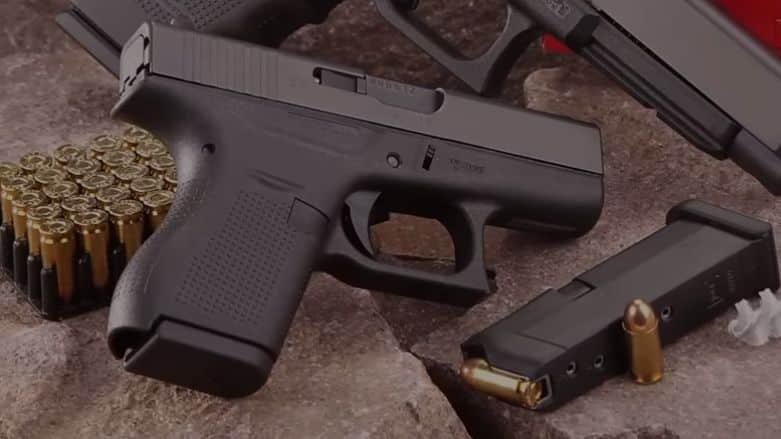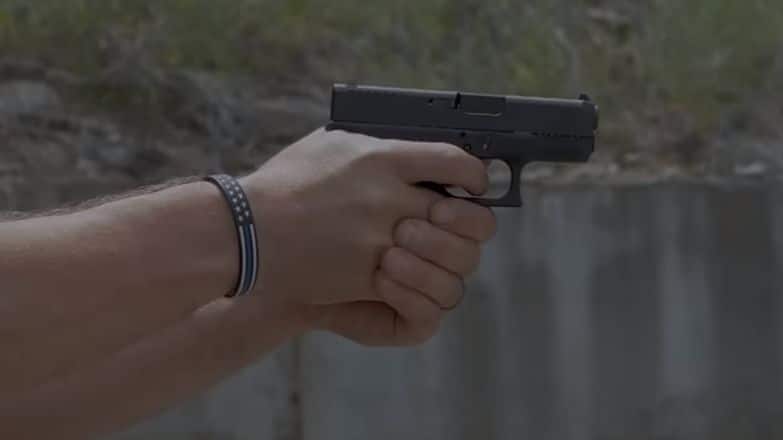Unlocking The Secrets Of Glock Sights: A Comprehensive Guide
When it comes to enhancing your shooting accuracy and overall performance with a Glock pistol, one essential aspect to consider is how to effectively use Glock sights. These sights play a pivotal role in ensuring that your shots hit the mark, and mastering their usage can make a significant difference in your shooting experience.
In this comprehensive guide, we will explore the ins and outs of Glock sights, helping you understand the various types, their proper usage, and tips for improving your shooting skills.
Getting to Know Glock Sights
Glock pistols come with a variety of sight options, and understanding them is the first step in maximizing your shooting accuracy. The most common types of Glock sights include:

1. Standard Sights
Standard Glock sights are the default option for most Glock models. They consist of a white dot front sight and a white outline rear sight. These sights are designed to offer a straightforward and effective sight picture.
The standard front sight features a white dot, which helps draw your eye’s attention to the front of the pistol. The rear sight is a white outline, which frames the front sight, allowing for quick and easy alignment.
2. Night Sights
Glock night sights are specifically designed for low-light or nighttime shooting conditions. These sights are equipped with small tritium inserts that glow in the dark, providing a clear sight picture even in low-light situations.
Tritium is a radioactive isotope that emits a low level of continuous light, making it ideal for night sights. The tritium inserts are sealed within the sights, ensuring longevity and consistent illumination. Night sights enable shooters to maintain accuracy and target acquisition in situations where standard sights would be inadequate.
3. Fiber Optic Sights
Fiber optic sights are an excellent choice for daytime shooting. These sights use brightly colored fiber rods, usually red or green, to catch available light and enhance the sight picture. The front sight is equipped with the fiber rod, making it highly visible.
The fiber rod in the front sight gathers ambient light and directs it to the shooter’s eye. This increased visibility allows for quick target acquisition and accurate shots. Fiber optic sights are particularly popular in competitive shooting sports, where speed and accuracy are paramount.
4. Adjustable Sights
Glock pistols can be equipped with adjustable rear sights. These sights allow shooters to make windage and elevation adjustments to the point of impact.
Adjustable sights are a valuable feature for precision shooting, as they permit fine-tuning of the pistol’s accuracy. Windage adjustments affect left-to-right bullet placement, while elevation adjustments impact bullet drop. Shooters can customize their Glock’s sights to suit their specific needs and preferences, making them ideal for those who require pinpoint accuracy.
Proper Sight Alignment
Proper sight alignment is the cornerstone of accurate shooting. It involves ensuring that the front and rear sights are perfectly aligned to achieve accurate shots consistently.
Sight alignment is based on the principle of “equal height and equal light.” This means that the front and rear sights should be of equal height, and they should form an even amount of light on either side of the front sight post. This alignment ensures that the bullet’s trajectory is in line with the shooter’s intended target.
Aiming Techniques
When it comes to maximizing your shooting accuracy with Glock sights, mastering different aiming techniques is essential. These techniques provide you with the skills and knowledge to adapt to various shooting scenarios, whether it’s fast target acquisition or precision shooting. Let’s explore these aiming methods in detail.

1. Point Shooting
Point shooting is an instinctive aiming technique where the shooter focuses on the target rather than the sights. This method is highly effective at close ranges and is based on muscle memory and practice.
Point shooting relies on the shooter’s ability to instinctively point the pistol at the target without visually aligning the sights. It is useful for self-defense scenarios where speed and rapid target acquisition are crucial.
2. Flash Sight Picture
The flash sight picture technique involves quickly aligning the front and rear sights before taking a shot. It allows for fast and accurate target acquisition.
With the flash sight picture, the shooter brings the front and rear sights into alignment for a split second, creating a clear sight picture just before firing. This technique is highly effective for engaging multiple targets quickly while maintaining accuracy.
3. Six O’Clock Hold
The six o’clock hold aiming technique involves aligning the front sight so that it sits just below the target. This method is commonly used in bullseye shooting.
With the six o’clock hold, the front sight is positioned below the target. This allows the shooter to have a clear view of the target while ensuring that the bullet will impact the center of the target. It’s a precision aiming technique often used in competitive shooting.
Read also: Why a Flashlight Should Be Used When Hunting
Tips for Mastering Glock Sights
Certainly, let’s delve deeper into each of the tips for mastering Glock sights:

Consistent Practice:
Consistent and deliberate practice is the foundation of becoming proficient with Glock sights. Range time is your opportunity to develop muscle memory and refine your sight alignment and aiming techniques. The more you practice, the more comfortable and natural using your Glock becomes. Regular practice sessions should be a part of your routine to maintain and improve your shooting skills.
Dry Fire Drills:
Dry fire drills are a valuable tool in your training arsenal. These drills involve practicing trigger control and sight picture without live ammunition. They are especially useful for honing your skills in a controlled environment. During dry fire, you can focus exclusively on sight alignment and trigger squeeze.
It’s an excellent way to refine your technique and troubleshoot any flinching or jerking tendencies. Remember to follow all firearm safety rules during dry fire practice, ensuring the firearm is unloaded and pointed in a safe direction.
Seek Professional Training:
While self-practice is beneficial, seeking professional training can elevate your skills to new levels. Enrolling in shooting courses led by experienced instructors can provide expert guidance and insights into mastering Glock sights. These instructors have a wealth of knowledge and can tailor their instruction to your specific needs.
They can identify areas for improvement and offer valuable feedback, helping you progress rapidly and with confidence. Professional training is especially recommended for those new to shooting or looking to fine-tune their abilities.
Maintain Your Sights:
The condition of your Glock sights plays a crucial role in your shooting accuracy. Over time, sights can become damaged, lose their brightness (in the case of night sights), or simply wear out. It’s vital to regularly inspect your sights and ensure they are in good condition.
If you notice any damage or diminished visibility, it’s advisable to replace them promptly. Maintaining your sights ensures consistent accuracy and reliability, which is particularly important in self-defense or competitive shooting scenarios.
Understanding Holdover:
Understanding holdover is a vital skill for those seeking to make precise long-range shots with Glock sights. Holdover refers to the adjustment needed to compensate for bullet drop at various distances. It’s particularly crucial when shooting at targets located at different ranges.
To master holdover, it’s essential to familiarize yourself with your Glock’s specific trajectory and the ballistic performance of the ammunition you use. This knowledge allows you to make the necessary adjustments to ensure your shots hit the mark, even at extended distances. Becoming proficient in holdover requires practice and an understanding of your Glock’s ballistics.
Incorporating these tips into your training regimen will undoubtedly improve your proficiency with Glock sights. Whether you’re a novice or an experienced shooter, consistent practice, dry fire drills, professional training, sight maintenance, and understanding holdover will contribute to your accuracy and confidence when using Glock sights.
Conclusion
Mastering Glock sights is a critical aspect of becoming a proficient shooter. Whether you choose standard, night, fiber optic, or adjustable sights, understanding sight alignment and aiming techniques is fundamental to hitting your target consistently.
Dedicate time to practice, seek professional training, and maintain your sights for optimal performance. With the right knowledge and commitment, you can unlock the full potential of your Glock pistol and become a more accurate and confident shooter.